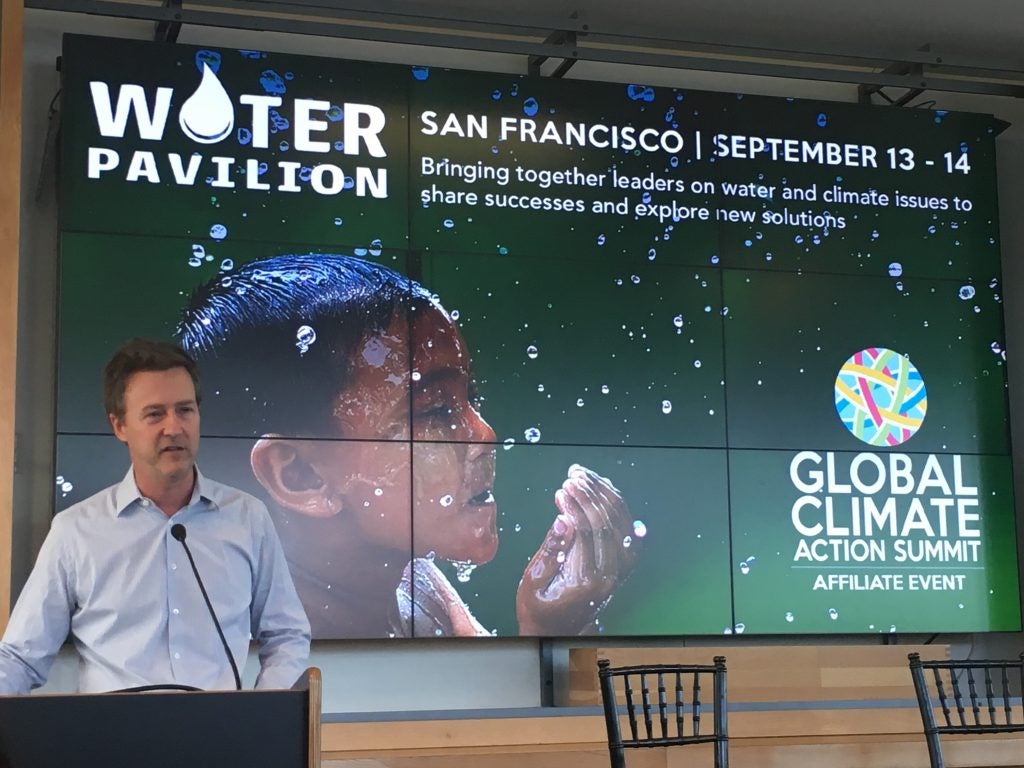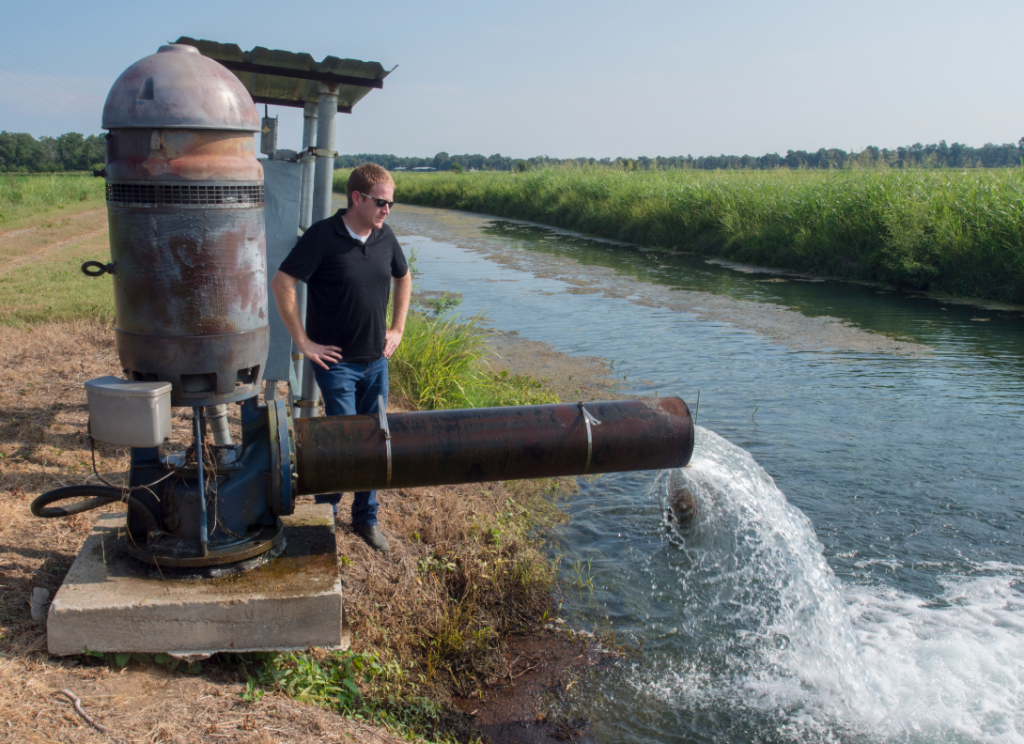Water missed the main stage at the Global Climate Action Summit. It should be front and center.
When thousands converged in San Francisco for the Global Climate Action Summit earlier this month, it was no surprise that the focus centered on reducing emissions.
But as speakers noted at a two-day Water Pavilion, an affiliate event at the summit, the majority of natural disasters and impacts from climate change are related to water – either too much of it (think of those in North Carolina suffering from devastating floods from Hurricane Florence), or too little (as we’ve seen in across the Southwest, with multiple states experiencing record-setting years-long droughts). These extremes are also recurring around the globe, from Hong Kong and the Philippines to Cuba and Australia.
Put simply, water is the blade of climate change that will cut most deeply.
As a result, it’s time to elevate water issues at major climate change events, such as this week’s tenth Climate Week NYC and the UN Conference of Parties climate conference in Poland in December.
Water is crucial in our climate change response
Speaker after speaker at the Water Pavilion offered compelling stats on why water is a crucial component of climate change adaptation and resilience. Among them:
- Each degree of global warming is projected to decrease renewable water resources by at least 20 percent for an additional 7 percent of the world population.
- 1 billion people in the world drink contaminated water.
- There is a 7-to-1 benefit-to-cost ratio for basic water and sanitation services in developing countries.
- Nearly a fifth of California’s state electricity is used for water.
So why isn’t water more central to the climate narrative?

The harshest answer to this question came from actor Edward Norton, whose father started The Nature Conservancy’s China program. He called our relationship to water “uniquely apathetic, entitled and grossly negligent.”
“Water has been taken for granted, as abundant and free,” Norton said.
You can live for weeks without food but not even 100 hours without water (some estimate a week), he added. “Yet most people think they couldn’t survive without their iPhones for a shorter period of time,” Norton said.
Water is an undervalued resource
The failure to price water appropriately is a symptom of undervaluing this precious resource. Water pricing, therefore, will play an important role in rebalancing our water systems in the West.
For example, it will be key to water trading as California implements the Sustainable Groundwater Management Act. And pricing is an essential ingredient of other innovative approaches to addressing water scarcity, including conservation agreements with tribes and farmers in Colorado and Arizona.
Pricing is also intertwined with environmental justice.
“We know if we don’t price water, it’s the poor and vulnerable that pay five to 50 times more,” said Henk Ovink, the Netherlands’ special envoy for International Water Affairs, noting that’s often because water has to be shipped in by truck.
Inadequate funding and investment in water infrastructure also have been major barriers to building climate resilience, not only in developing countries but also here in California.
The state of California is taking some steps in the right direction, such as the approval of $1.27 billion for water projects in Proposition 68. But while debate swirls over the $17 billion two-tunnel WaterFix project, the state also has underinvested in its natural water infrastructure – like the watersheds that collect our rain and snow, the rivers that deliver water to our farms and cities, and the vast underground basins that store our groundwater.
Finally, innovation also is particularly challenging in the water sector, which entrepreneur Andrew Benedek of Anaergia said suffers the greatest inertia of any business. Breaking into the market requires long-term, patient, impact-oriented investors and unusually imaginative utilities, he said.
Inadequate funding and investment in water infrastructure are major barriers to building climate resilience in California and beyond. Share on XHow do we elevate water in climate change discussions?
The answers from the Water Pavilion included the need for a unified voice, a new narrative and more water education.
“Do you identify yourself as a united movement?” asked May Boeve, executive director of 350.org. “Water movement” sounds like a dance class she would take in Berkeley, she said, half-jokingly.
Terry Tamminen, CEO of the Leonardo DiCaprio Foundation and secretary of the California Environmental Protection Agency under Gov. Arnold Schwarzenegger, called for more eco-literacy. In addition to politics and money, ignorance is other reason water is getting the short shrift, he said.
J. Carl Ganter, co-founder and director of Circle of Blue, advised telling the stories of the real people behind the bullet points. “Tell better stories. Tell them now. And tell them with heart and soul,” he said.
Obviously, many of these components are interconnected. A compelling narrative and united movement can build community involvement and political will, which can help garner more funding to invest in our water infrastructure. As Ganter suggests, the important stories about water are ultimately about people – farmers, the displaced poor – who will be cut by the blade of climate change if we don’t step up to the challenge of building more resilient water systems. Our future depends on it.











